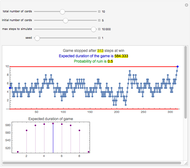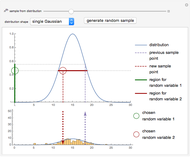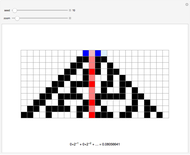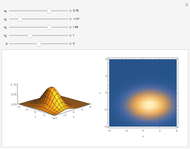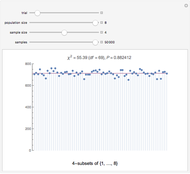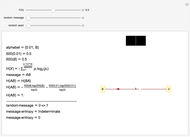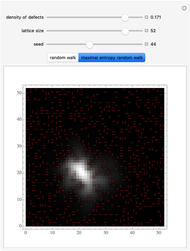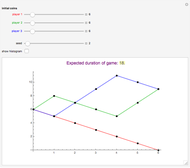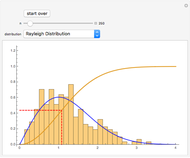The Method of Inverse Transforms

Requires a Wolfram Notebook System
Interact on desktop, mobile and cloud with the free Wolfram Player or other Wolfram Language products.
This Demonstration illustrates the method of inverse transforms, which can be used to generate random numbers from a particular continuous or discrete probability distribution. By passing random numbers on the unit interval through the inverse of the cumulative distribution function (CDF), a sample of a random variable governed by that CDF is obtained. Each output is collected in a bin of an evolving histogram. During each iteration, the dotted red line running from the  axis to the graph of the CDF to the
axis to the graph of the CDF to the  axis illustrates the method explicitly. With multiple samples, you can obtain an approximation of the probability density function (PDF) associated with the given random variable. In this Demonstration, an assortment of continuous and discrete random variables are considered.
axis illustrates the method explicitly. With multiple samples, you can obtain an approximation of the probability density function (PDF) associated with the given random variable. In this Demonstration, an assortment of continuous and discrete random variables are considered.
Contributed by: Ryan Carroll, Adam Joplin, Jeff Hamrick, and Eric Stradley (March 2011)
Open content licensed under CC BY-NC-SA
Snapshots
Details
You may choose from these distributions: exponential, uniform, triangular, Pareto, Gaussian, Rayleigh, binomial, negative binomial, geometric, and Poisson.
The method of inverse transforms is most often used to simulate a realization of a random variable associated with a particular distribution. Inverse transform sampling works as follows.
Consider, for example, a continuous random variable with cumulative distribution function  . Let
. Let  be a uniform random variable over the unit interval and pass
be a uniform random variable over the unit interval and pass  through the inverse of the cumulative distribution function, that is, compute
through the inverse of the cumulative distribution function, that is, compute  . We call
. We call  the sample.
the sample.
It can be seen that for a sufficiently large set of samples, the associated normalized histogram generates a close approximation to the probability density function of the random variable associated with the cumulative distribution function  . A result of Kolmogorov asserts that if
. A result of Kolmogorov asserts that if  is continuous, then the rate of convergence in the sup-norm topology is
is continuous, then the rate of convergence in the sup-norm topology is  .
.
For more information about generating samples from random variables, see, for example, S. M. Ross, Simulation, 3rd ed., London: Elsevier Academic Press, 2002.
Permanent Citation








